Up Next
‘I’m Expressing My Love for a Humanity I Will Never Understand’: Rising Artist Julia Jo Gives Form to the World of Emotions
The artist's solo exhibition "Swoon" is on view at Jessica Silverman, San Francisco, through November 4, 2023.
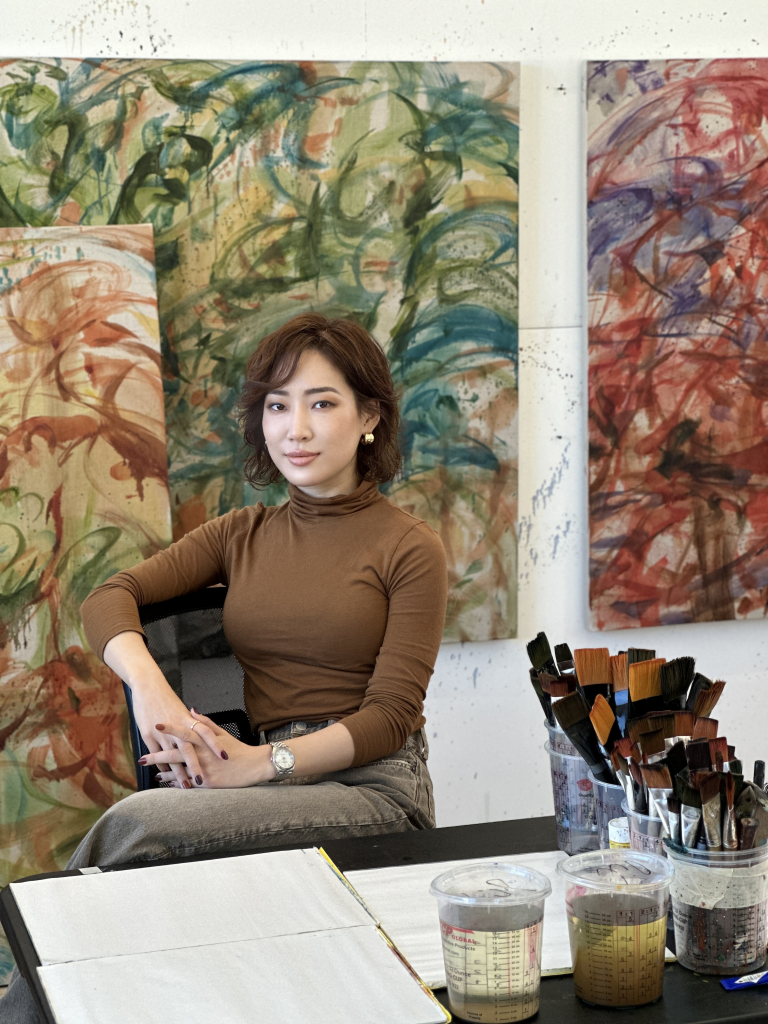
The artist's solo exhibition "Swoon" is on view at Jessica Silverman, San Francisco, through November 4, 2023.

Katie White

In a Marcel Breuer-designed house in a lush wooded green, artist Julia Jo sits surrounded by canvases, her rich jewel-toned visions oscillating between abstraction and figuration. Rhythmic, curvilinear brushstrokes dance and churn across these canvases in hues of emerald greens, maroons, and royal blues. Human figures, feminine ones, emerge in glimpses from within these torrents of marks, their gestures at times elegant, at times contorted, coming into momentary focus before sinking back below into the tidal push and pull of brushstrokes.
“The paintings come from a figurative ground. Those are my puzzle pieces,” she explained, pointing to the hints of hands, legs, hips in her newest works. “In my opinion, painting should be beautiful. I want to grab you and then kind of give you this frustration. The longer I can hold you there, the better.”
Jo (b. 1991, South Korea), who typically works at her studio in Williamsburg, Brooklyn, is currently taking part in the Beecher Residency, a program established by collectors John Auerbach and Ed Tang in 2022 at Breuer’s historic Stillman House in Litchfield, Connecticut. Here, she’s commenced a whole new body of work, one informed by her change in environment.
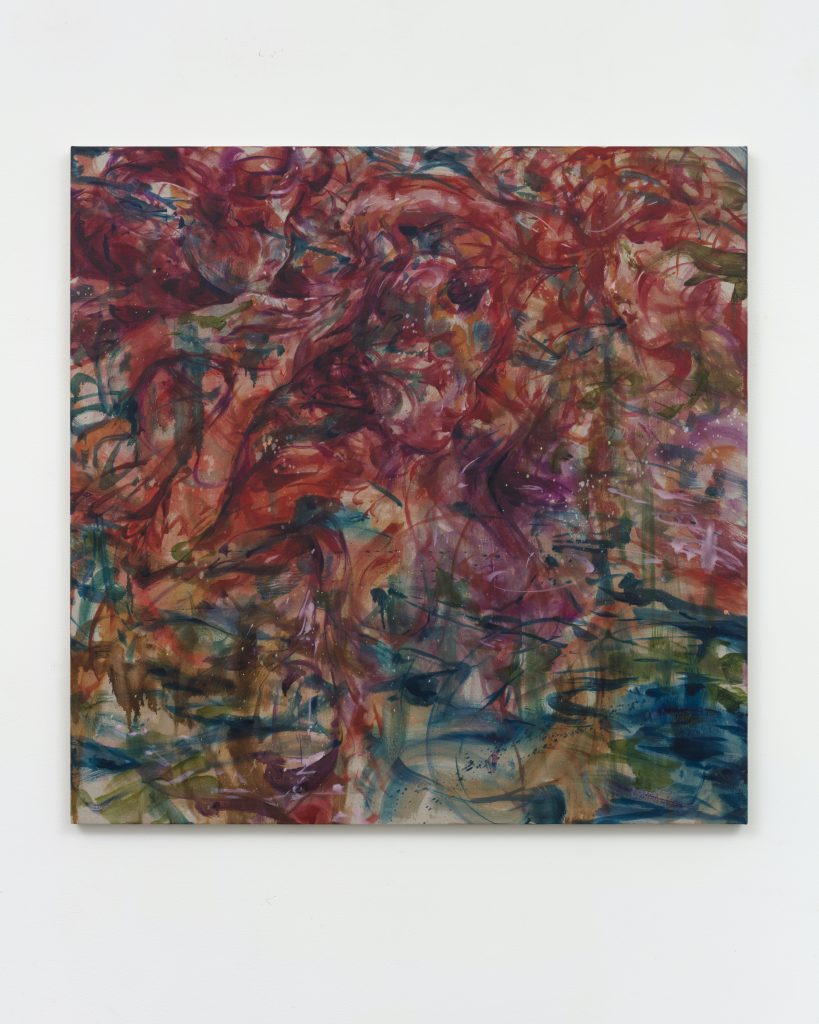
Julia Jo, Envy (2023). Photo: Lance Brewer. Courtesy of Jessica Silverman.
“In Brooklyn, I work in bursts, where I want to go into every single one of the canvases that I set up,” she explained. “Time feels longer here. I’m in this precious bubble where I’ve been ripped out of my usual routine. I’m getting a little more intimate with these new works.”
Intimacy is foundational to Jo’s practice. The artist often refers to her paintings as sisters or daughters. Her slightly larger-than-life figures she thinks of in relation to her own person. In this way, the residency has offered a welcome pause to reorient following an unyieldingly busy year. Earlier this month, Jo opened “Swoon” her debut solo exhibition with Jessica Silverman Gallery in San Francisco (through November 4). This exhibition comes on the heels of two other major solo exhibitions— “Riptide” at Charles Moffett in New York in January and February of this year, and “Point of No Return” at James Fuentes in Los Angeles over the summer.
These three shows, though in quick succession, conjure up myriad and at times contradictory responses. While tumultuous sensations of desire, grief, and even jealousy imparted propulsive qualities to “Riptide,” the exhibition at Jessica Silverman offers are more sensual even romantic look into emotional interiors. “‘Swoon’ is a joyous word,” Jo considered. “I think of the works at Jessica Silverman as a kind of heart-fluttering moment. In the show at Charles Moffett, I went more into the ugly underbelly of domestic life, which I’m very familiar with. Now, I’m exploring budding, hopeful feelings. These are feelings that might not amount to much and are forgotten so quickly. I never fully let go of the uglier emotions, but those make the fluttery ones more beautiful. I think they all need to exist together in these works.”
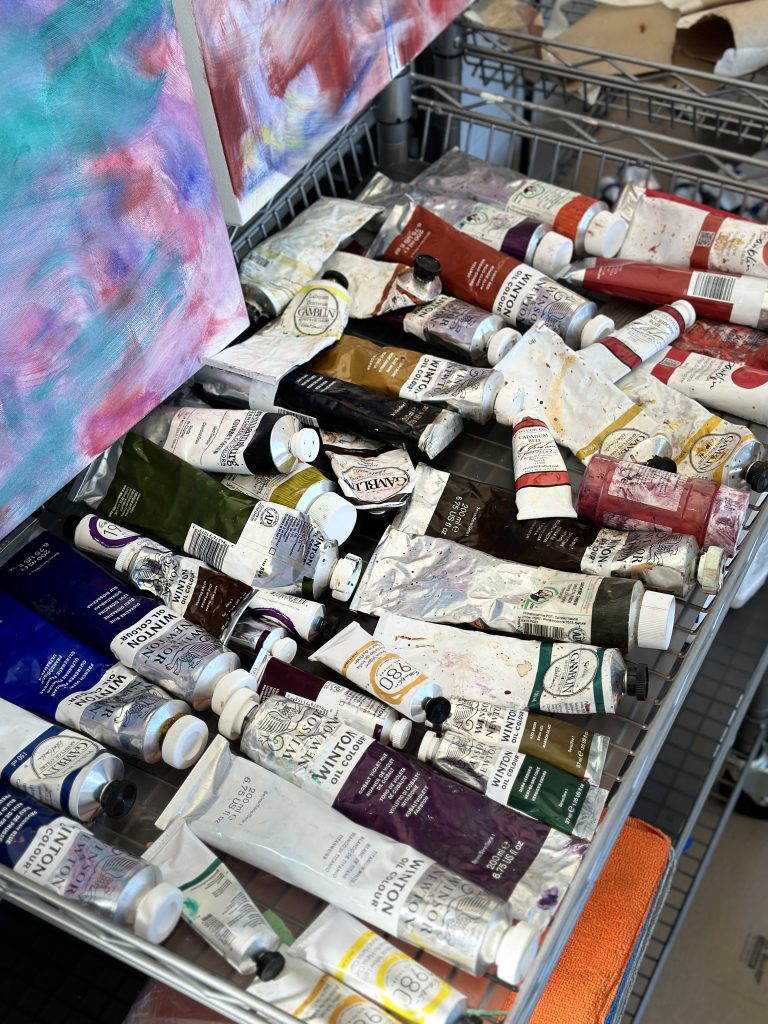
Courtesy of the artist.
Jo’s paintings exist in the liminal space between what is meant and what is perceived, as a dissolution between the internal and external worlds. “I’m very interested in miscommunication. I miscommunicate really successfully,” she laughed, “In talking to you right now I can use so many different words and put faith in my body language, but I’m so hyper-aware that though I try my best I probably won’t be able to fully transfer what I’m thinking and feeling unless we plug our brains together!”
Born in South Korea, Jo, starting in grade school, was enrolled in schools throughout the United States, which took her from the West Coast to New Jersey and in between. In these shifting environments, Jo adopted a chameleon-like ability to mirror body language and social queues, though they didn’t always mirror her interior emotional states. Here, Jo leaves room for discomfort and confusion, “leaving out the final puzzle piece” to solve her visual riddles. First laying down figurative elements, she will then go in with one or two colors, filling the work with their characteristic chromatic intensity, adding a torrent of marks that disorient the image as it progresses. ” Colors are so inherently emotional that has to come in after the figuration,” she explained, of her rich hues. “My paintings are a kind of obstruction. I don’t want to give you more, but with every layer, I’m giving you more. And it can accumulate into a kind of explosion,” she said.
Jo paints onto square canvases, an unusual format, that she prizes for “its unruliness and ‘difficult to tame’ nature in its orientation,” and which have “no top or bottom unless you assign them.” Looking at these paintings a rich well of art historical inspirations can be named— the swirling energy and cascading light of J.M.W. Turner’s tempestuous seascapes, the fleshiness of Peter Paul Rubens, the delicate gestures of Titian. Joan Mitchell. Cecily Brown, Julie Mehretu, and Jenny Saville are among her contemporary influences.
“I look at Cecily Brown’s paintings a lot. Some of them are just turning and churning and it’s like purgatory as she describes it,” she elaborated. “Julie Mehretu’s I admire for the ways they create a whole world of its own.”
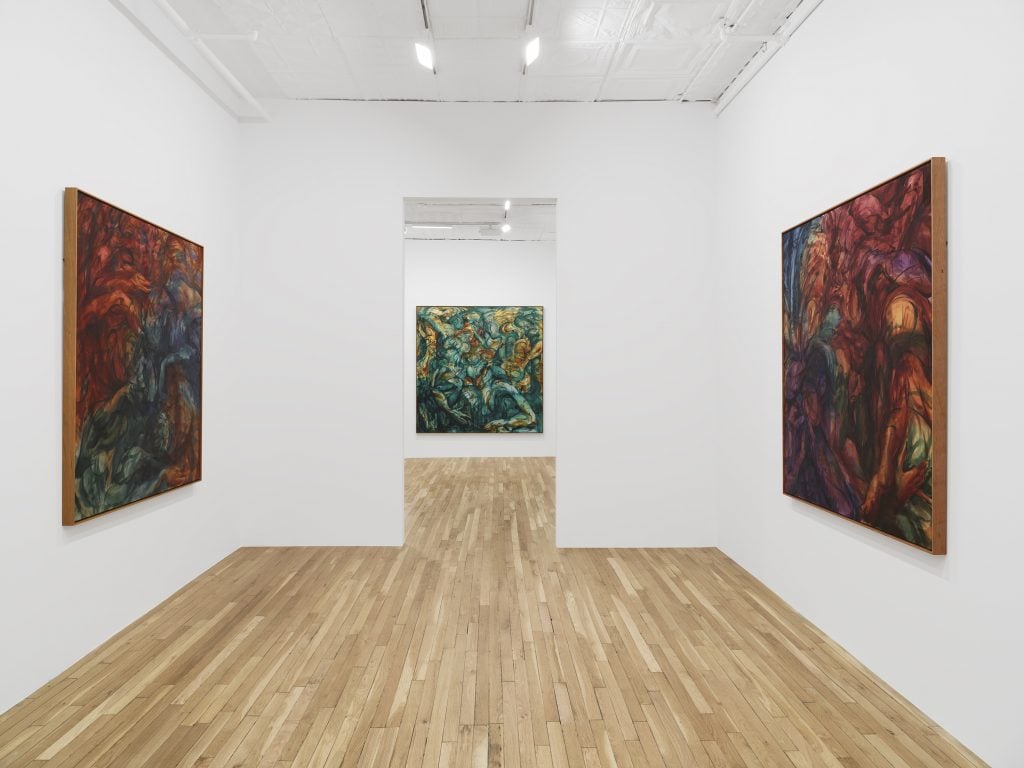
Installation View of Julia Jo: Riptide at Charles Moffett, January – February 2023. Photo by Thomas Barratt, courtesy of Charles Moffett.
Known for her large-scale compositions, the exhibition at Jessica Silverman has introduced smaller format works, which Jo has used as a format for tightening, cropping, and contorting the body to express more complex emotions and potentials.
“It was very exciting to challenge myself to compress everything. I have to be more aware if I want to achieve a certain level of drama and speed. What do I need to edit out? This could be shifting brush sizes or if that doesn’t work, working with contrast pigmentation,” she explained. “I’m always interested in bodies positioned in a certain way that feel vulnerable and communicating something that we inherently know. We all have the same mechanism that is the body, so I wanted to squeeze in the figures so they become portable, huggable, miniature moments.”
For the artist, the works are in some sense a way of acknowledging uncertainty and dislocation, her own search for home.
“I grew up in a tumultuous family situation. My mother and father had their baggage, but no one worked it out,” she said. “For me, family is a great source of pain and misunderstanding. I’m a 31-year-old woman living in New York. I don’t go to visit my family. What connection do I have with South Korea then? I feel I don’t have a home. I am used to the constant state of change.”
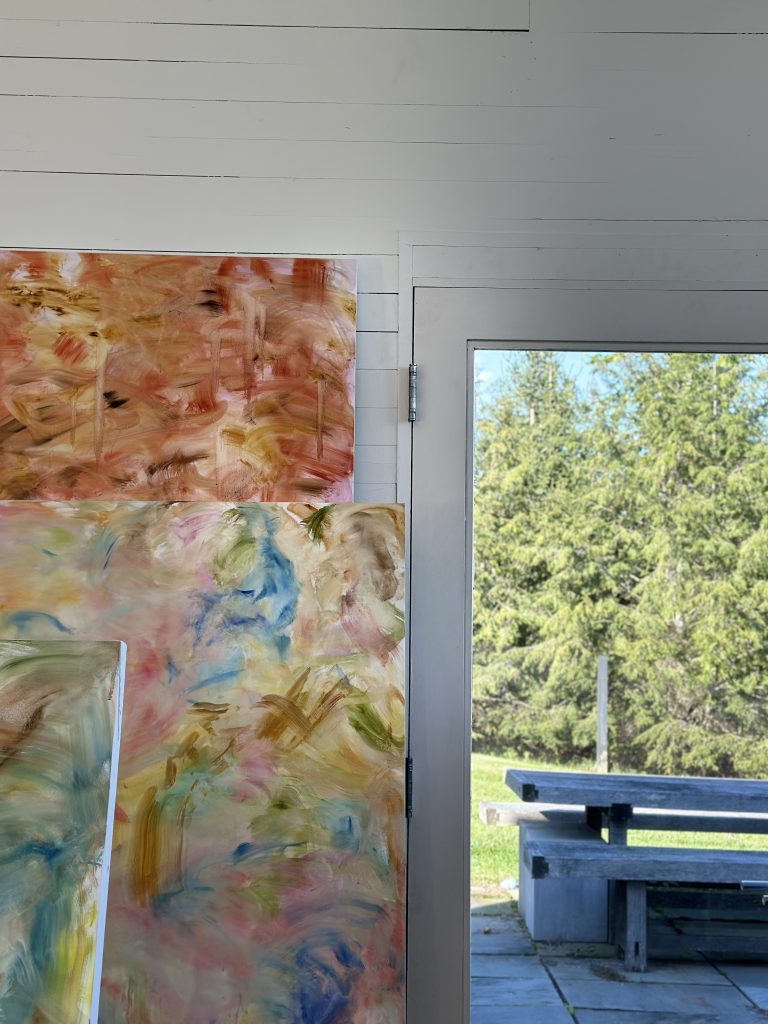
Courtesy of the artist.
The body itself has instead become her place of evolution and return. Jo acknowledges that she often paints her mother. Other times, she says she sees herself in these figures. Rather than an individual, however, she is more interested in the ways people have all learned to read a body, a gesture, outside of language. She seems to ask: If we lose sight of each other, can we ultimately return to one another?
“My figures are my way of trying to gain access into an intimate space that you cannot quite describe, It’s about the frustration of that, the layered feelings and emotions,” she explained. “Can I lose that initial access point entirely and then come back even stronger? It’s a question I will spend my life trying to figure out. I’m expressing my love for a humanity I will never quite understand. People are such a mystery. What the hell, right? But I approach with such love because we are all enigmas.”